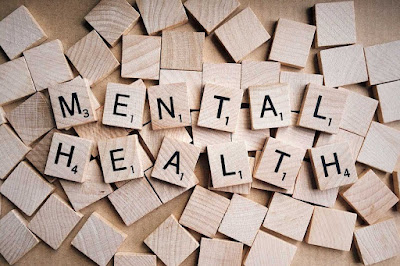How yoga can help improve your mental health and well-being
If you want to improve your overall understanding of mental health and health, then focusing on deep breathing and gentle stretching can help in the practice of yoga. Yoga is considered one of the oldest forms of exercise and although there are many different styles, from gentle to rigid, yoga exercises usually include stretching, breathing, and periods of deep relaxation or meditation. A growing number of studies from the 1970s to the present suggest that yoga may have positive results for managing symptoms of depression, anxiety, or stress in people. In fact, Harvard Medical School believes that there is increasing evidence that yoga practice is a relatively low-risk, high-leverage approach to improving health for health.
The month has been marked, the UN International Day of Yoga on 21 June aims to raise awareness of the many benefits, including physical and psychological, and to practice yoga. Here is a brief guide to getting started with yoga for mental health and wellbeing.
How does yoga benefit mental health?
One of the most effective lifestyle changes you can implement is yoga. Often, doctors will advise you to try to participate in physical activities. They also recommend meditation and dietary changes. An activity in yoga involves two of the above three. The benefits of yoga for mental health are many, here are some.1. Calms the mind One of the main reasons doctors recommend yoga is because poses involve complex asanas and breathing exercises that are known to calm your body and mind. Performing these poses will help prevent anxiety attacks or panic attacks which are common mental health problems.
2. Helps Focus People who have disorders such as ADHD are often asked to try yoga as it helps bring the body to the center while helping to calm the mind and focus. ADHD is a disorder that directly affects focus and maintains attention, doing so involves breathing techniques and promotes focus.
 |
| Yoga For Mental Health |
3. Improves Your Mood Physical exercise leads to the secretion of brain chemicals such as endorphins and dopamine. It assists with adjusting your mindset and manage basic psychological well-being issues like discouragement. Specialists suggest yoga for mental harmony and fixation and to improve your state of mind.
4. Helps build confidence While yoga can help people suffering from self-esteem issues, loss of confidence or self-esteem is often considered to be a cause of depression and anxiety. Doing yoga regularly helps to keep your body in the center and make it grow slowly. It improves your confidence. Breathing in yoga helps to overcome your self-doubt.
 |
| Yoga For Mental Health |
Increases patience A common side effect of disorders like anxiety, depression, and bipolar is a lack of patience. This causes an outbreak of uncontrolled anger. Yoga includes many respiratory activities known as pranayama which help in purifying your body and brain.
Doing these exercises will improve your patience and sense of inner balance and help prevent the outbreak of anger.
 |
| Yoga For Mental Health |
1. Anjunayasan
2. Garudasana
This posture is generally known as the falcon presence. In this stance, you need to inhale while keeping your body in balance. This helps prevent anxiety attacks while keeping your focus. Take a deep breath, keep your body weight on one leg. Gently wrap one leg around the other. Sync your hips and gently bend your knees. Keep your ankle flat on the ground. Keep your breath also slow and slow. Wrap one arm around the elbow and the other around the wrist.
3. Natarajasana
Commonly referred to as the "dancer's pose", this asana is great for balancing the mood. This can be advantageous for individuals who are battling sorrow and tension. With both feet planted on the ground, bend one knee back; Using your hand, hold the ankle. Slowly keeping a steady posture, bend forward and lift your ankle up towards the sky. Expand your free hand before you. Take 5 deep breaths and take one breath as well. 4. Veerabhadrasana Commonly known as the "warrior pose", there are many forms of this practice, all of which require focusing and steady breathing. We are covering the original warrior pose. On two legs, spread your legs, rotate your hips to one side, turn your ankles to the side you are facing. Crease the front leg at a 90-degree point. Extend your arms to your arms and breathe deeply and evenly for 10 seconds.
5. VRKSASANA (tray position)
Vriksha means tree. The final position of this asana is like the shape of a tree. It changes you emotionally, helps you fight your bad mood, depending on many emotional factors such as your general mood. This asana reduces anxiety, mental tension. It calms you down and helps curb your nervous habits. Vriksasana also increases your concentration power. TECHNIQUES Stand with feet 2 inches apart. Notice a point in front. Exhale, raise your right leg and bend the knee and place the foot inside the left thigh. The heel should touch the perineum. Inhale and spread your hands above your head and join your palms together. Stretch the entire body from top to bottom without losing balance. Stay in the position for 10 to 30 seconds and inhale typically. Breathe out and bring down the correct leg. Unwind and rehash the asana on the opposite side.
6. Sethubandhasan (short post) Setu Bandha means the construction of a bridge. In this posture, the body is situated like a bridge, hence the name. It is also called cataspadasana. It relieves depression and anxiety and strengthens the lower back muscles. TECHNIQUES Lie on your back, place your hands on the floor near the hips and keep the palms down. Bend both legs at the knees and bring the heel closer to the hips. To breathe; Slowly raise your buttocks and arch your back as much as you can to build a bridge. Raise the chest, abdomen, and waist as much as possible towards your head but do not keep tension. Remain in this position for 10-30 seconds and breathe normally and even. Exhaling slowly returns to the original position and relaxes in the savanna. In the last position, place the shoulders and head on the floor.
7. Shavasan
Shava means dead body. The last situation in this asana looks like a dead body. Shaiva asana not only improves your mental health but also helps in relaxing your body. Helps to relieve all types of stresses and relaxes both body and mind. Calms the entire psycho-physiological system. The mind, which is constantly attracted to the outside world, and is bored with useless thoughts, is thus gradually absorbed; As the mind is calm and absorbed. It soaks up your brain cells. TECHNIQUES Lie on your back and keep your feet apart. Also, keep the hands at least 15 cm away from your body. Allow the fingers to curl slightly but do not reduce any tension. The palms facing the ceiling and keep your eyes closed. Keep your head and spine aligned, making sure your head is not sideways. Relax the whole body consciously. Find out about the natural breath and allow it to be rhythmic and slow. Stay in position until you feel refreshed and relaxed.
8. TADASANA (Palm tray pedestal or mouse pot)
Mountain pose is one of the best yoga poses for mental health that you should practice in times of crisis. Tada means palm tree or mountain. It is a standing posture. This asana is meant to achieve stability and firmness. It helps in clearing the congestion of the spinal nerves. It relieves tension, aches, and pains throughout the body. Improves blood circulation and makes you feel more energetic and enthusiastic. It helps reduce anxiety. TECHNIQUES
Keep the feet 2 inches apart and keep the arms on the side. Make sure that your heel and big toes are touching each other. Raise the heels off the floor and equilibrium on the toes. Stay in this situation for 10 - 15 seconds. Exhale, bring the heel down. Come back to standing posture.
9. Vajrasana It is a meditation posture known for improving meditation, peace, and digestion. Slowly begin to sit on your knees, extending your ankles outward, bringing your thighs and calves together. Then place your palms on your knees. Take a deep breath in and out for one minute for 30 minutes.
10. Chakrasana Known as circle pose, it is a slightly harder posture but it helps to keep your peace and focus. how to do it While standing keep your arms above your head. Keeping your back straight, bend backward. Do this slowly and until your palms reach the floor behind you. Keep your ankles firmly on the ground. careful Make sure to do this with an expert present as it very well may be hazardous. Do not do hard and fast movements and keep your breath on the same track as your body movements. While yoga is a great way to help manage mental health, it should not be considered a solution to mental health issues. Use yoga as a medicine supplement and if necessary, medication is the best course of action. Consult your doctor for the best mental health treatment plan for you.









0 Comments